A homogeneous cylinder of mass Mand radius r is pulled on a horizontal plane by a horizontal force F acting through its centre of mass. Assuming rolling without slipping, find the angular acceleration of the cylinder,
3F2mR
F3mR
F2mR
2F3mR
To find the angular acceleration of a homogeneous cylinder being pulled on a horizontal plane by a force F acting through its center of mass, we can follow these steps:
Step 1: Identify the forces acting on the cylinder
- The force F is applied horizontally at the center of mass of the cylinder.
- There is a frictional force f acting in the opposite direction at the point of contact with the ground.
Step 2: Write the equations of motion
- For linear motion, applying Newton's second law:
F−f=Ma
where M is the mass of the cylinder and a is its linear acceleration.
Step 3: Write the torque equation
- The torque τ about the center of mass due to the frictional force is given by:
τ=f⋅r
- According to the rotational form of Newton's second law:
τ=Iα
where I is the moment of inertia of the cylinder and α is the angular acceleration.
Step 4: Calculate the moment of inertia
- For a homogeneous cylinder, the moment of inertia I about its center is:
I=12Mr2
Step 5: Relate linear and angular acceleration
- Since the cylinder rolls without slipping, the linear acceleration a and angular acceleration α are related by:
a=αr⇒α=ar
Step 6: Substitute α into the torque equation
- Substituting for α:
f⋅r=(12Mr2)(ar)
- Simplifying gives:
f⋅r=12Mar
- Dividing both sides by r:
f=12Ma
Step 7: Substitute f back into the linear motion equation
- Now substituting f into the linear motion equation:
F−12Ma=Ma
- Rearranging gives:
F=Ma+12Ma=32Ma
- Solving for a:
a=2F3M
Step 8: Find the angular acceleration α
- Now substituting a back into the equation for α:
α=ar=2F3Mr=2F3Mr
Final Result
The angular acceleration α of the cylinder is:
α=2F3Mr
---
- The force F is applied horizontally at the center of mass of the cylinder.
- There is a frictional force f acting in the opposite direction at the point of contact with the ground.
- For linear motion, applying Newton's second law:
F−f=Ma
where M is the mass of the cylinder and a is its linear acceleration.
- The torque τ about the center of mass due to the frictional force is given by:
τ=f⋅r
- According to the rotational form of Newton's second law:
τ=Iα
where I is the moment of inertia of the cylinder and α is the angular acceleration.
- For a homogeneous cylinder, the moment of inertia I about its center is:
I=12Mr2
- Since the cylinder rolls without slipping, the linear acceleration a and angular acceleration α are related by:
a=αr⇒α=ar
- Substituting for α:
f⋅r=(12Mr2)(ar)
- Simplifying gives:
f⋅r=12Mar
- Dividing both sides by r:
f=12Ma
- Now substituting f into the linear motion equation:
F−12Ma=Ma
- Rearranging gives:
F=Ma+12Ma=32Ma
- Solving for a:
a=2F3M
- Now substituting a back into the equation for α:
α=ar=2F3Mr=2F3Mr
The angular acceleration α of the cylinder is:
α=2F3Mr
Topper's Solved these Questions
Similar Questions
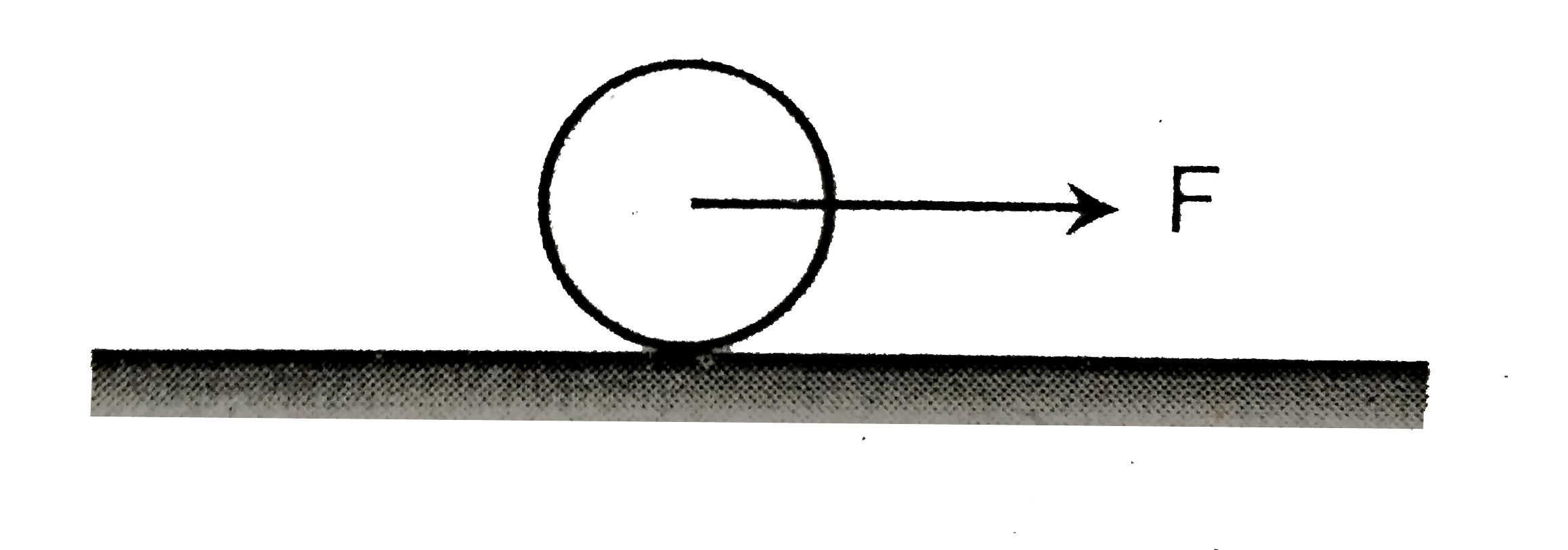
A uniform solid cylinder having mass M and radius R is pulled by a horiozntal force F acting through the center as shown. The cylinder rolls to the right without slipping. What is the magnitude of the force of friction between the cylinder and the ground?
View SolutionA bullet of mass m moving with a velocity of u just grazes the top of a solid cylinder of mass M and radius R resting on a rough horizontal surface as shown and is embedded in the cylinder after impact. Assuming that the cylinder rolls without slipping, find the angular velocity of the cylinder and the final velocity of the bullet.
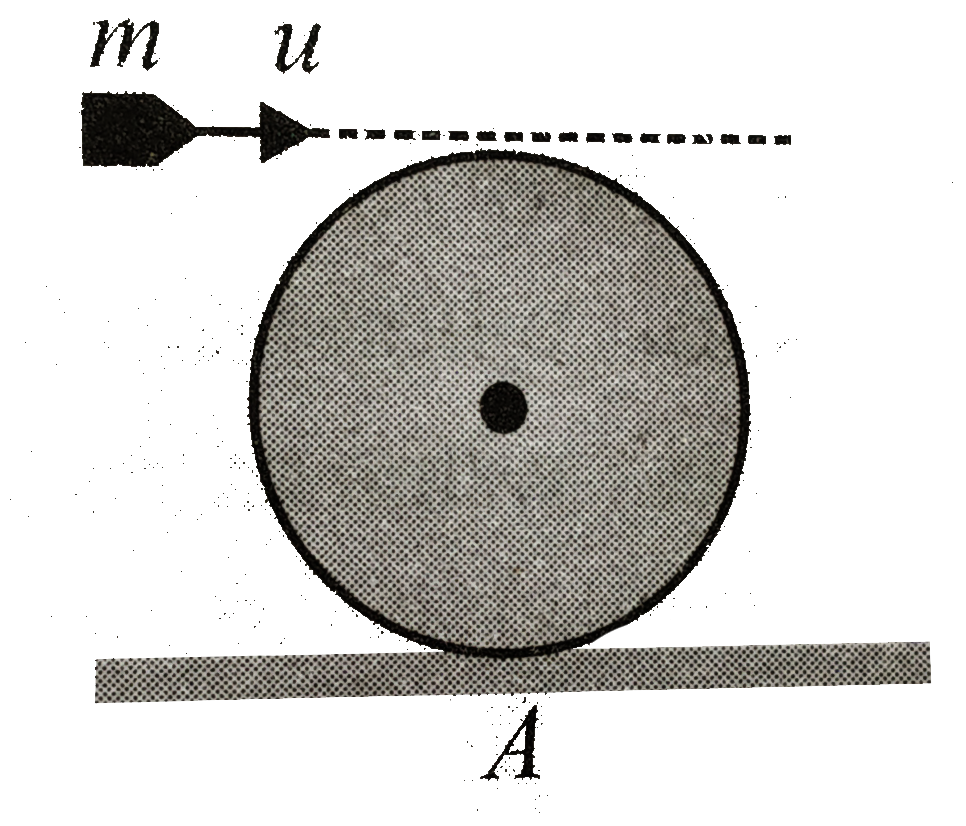
View Solution
Knowledge Check
A solid cylinder of mass M and radius R rolls down an inclined plane without slipping. THE speed of its centre of mass when it reaches the bottom is
A√(2gh)B√4/3.ghC√3/4.ghD√(4g/h)
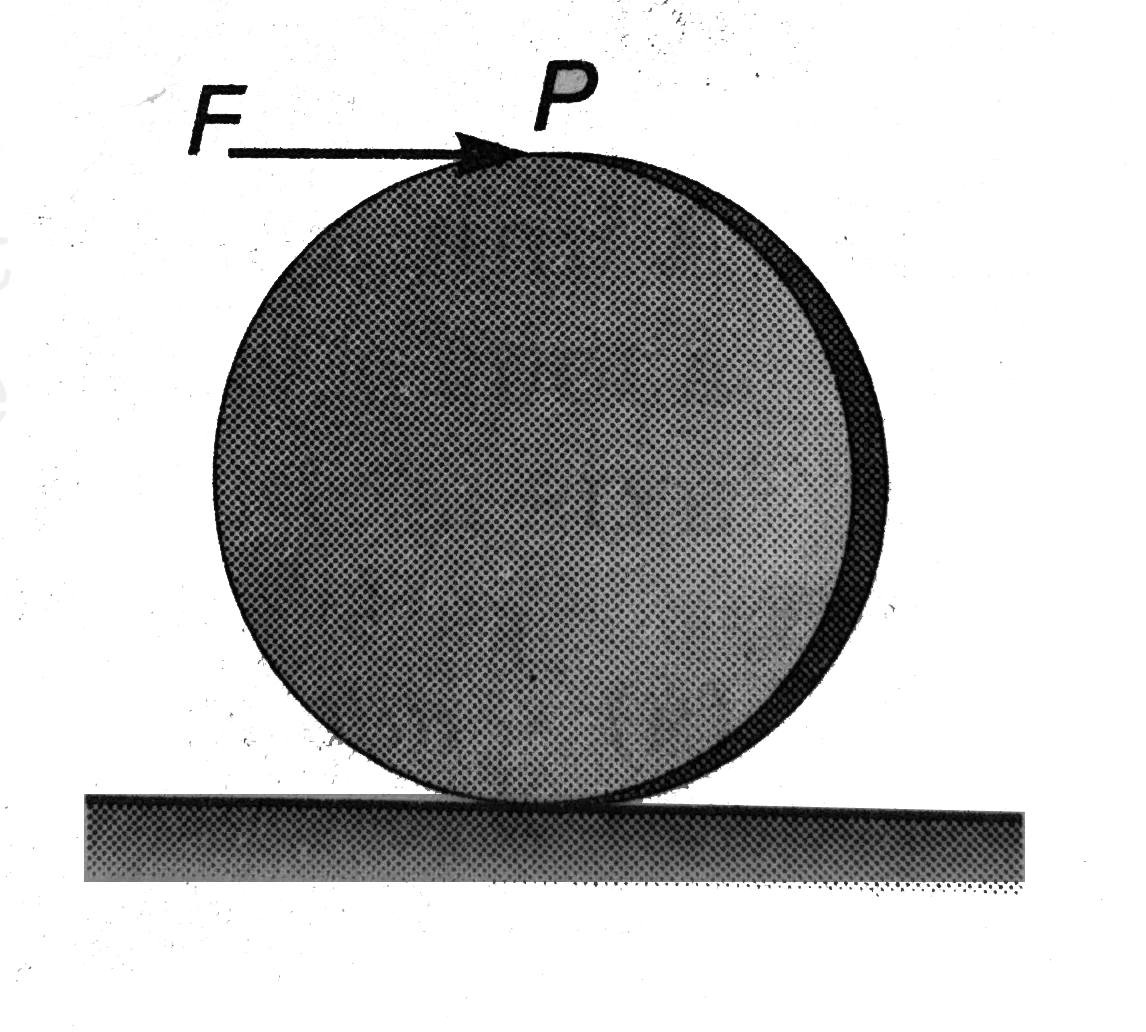
A uniform solid cylinder of mass m and radius R is placed on a rough horizontal surface. A horizontal constant force F is applied at the top point P of the cylinder so that it start pure rolling. The acceleration of the cylinder is
View SolutionA lawn roller in the form of a thin-walled hollow cylinder of mass M is pulled horizotally with a constant horizontally force F applied by a handle attached to the axle. If it rolls without slipping. Find the acceleration and the friction forces.
View SolutionA small particle of mass m is attached at B to a hoop of mass m and radius r, whole system is placed on the rough horizontal ground. The system is released from rest when B is directly above A and rolls without slipping. Find the angular acceleration of the system at the instant when AB becomes horizontal as shown in the figure.
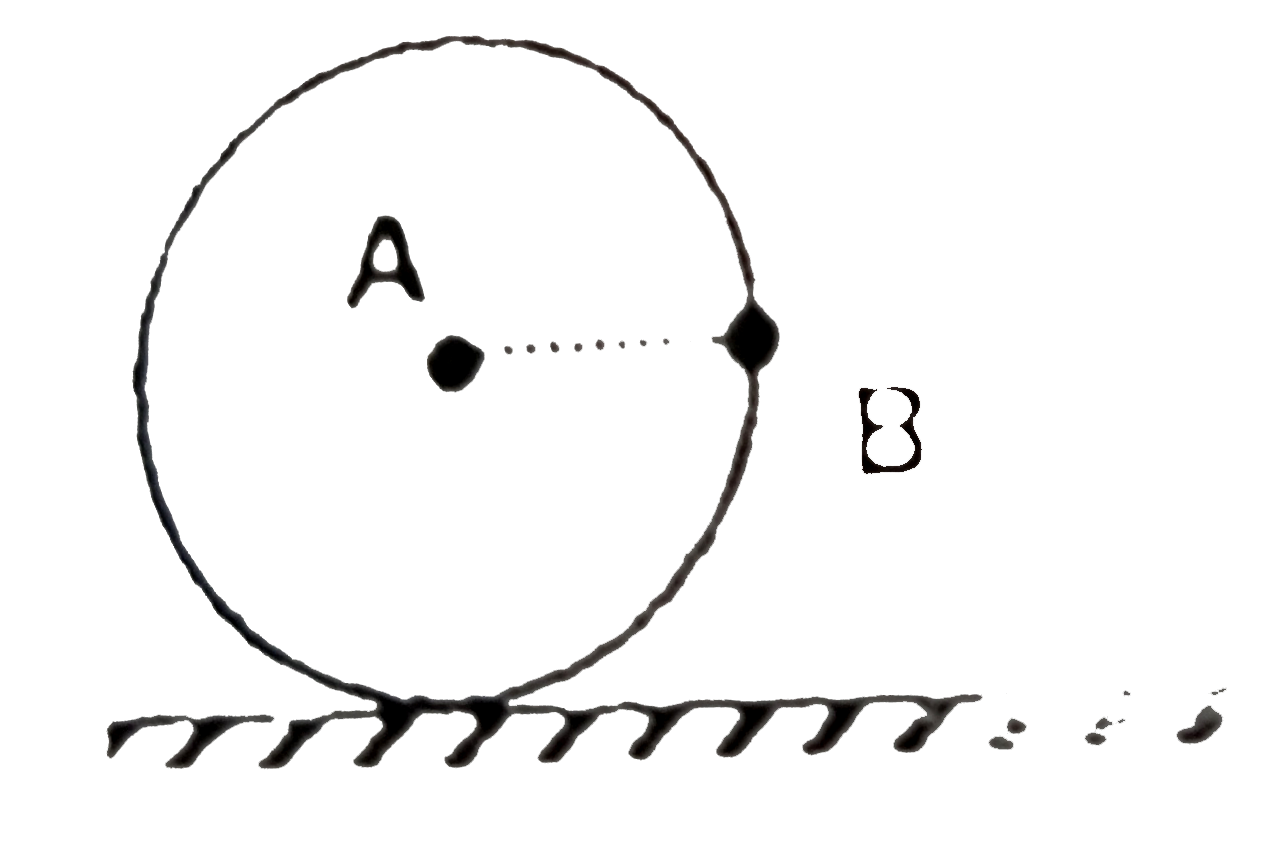
View SolutionA string is wound around a hollow cylinder of mass 5 Kg and radius 0.5 m. If the string is now pulled with a horizontal force of 40 N, the cylinder is rolling without slipping on a horizontal surface (see figure), then the angular acceleration of the cylinder will be (Neglect the mass and thickness of the string).

View SolutionA cylinder of mass M and radius R is to be raised on a horizontal step of height h=R3. Cylinder is pulled by a rope as shown in figure. Assuming no slipping, the minimum value of force F to raise the cylinder is
_PHY_E05_246_Q01.png)
View SolutionOn an uniform cylinder of mass m and radius R a constant horizontal force F is applied at any point. Choose the correct alternative if cylinder is rolling without slipping in rightward direction
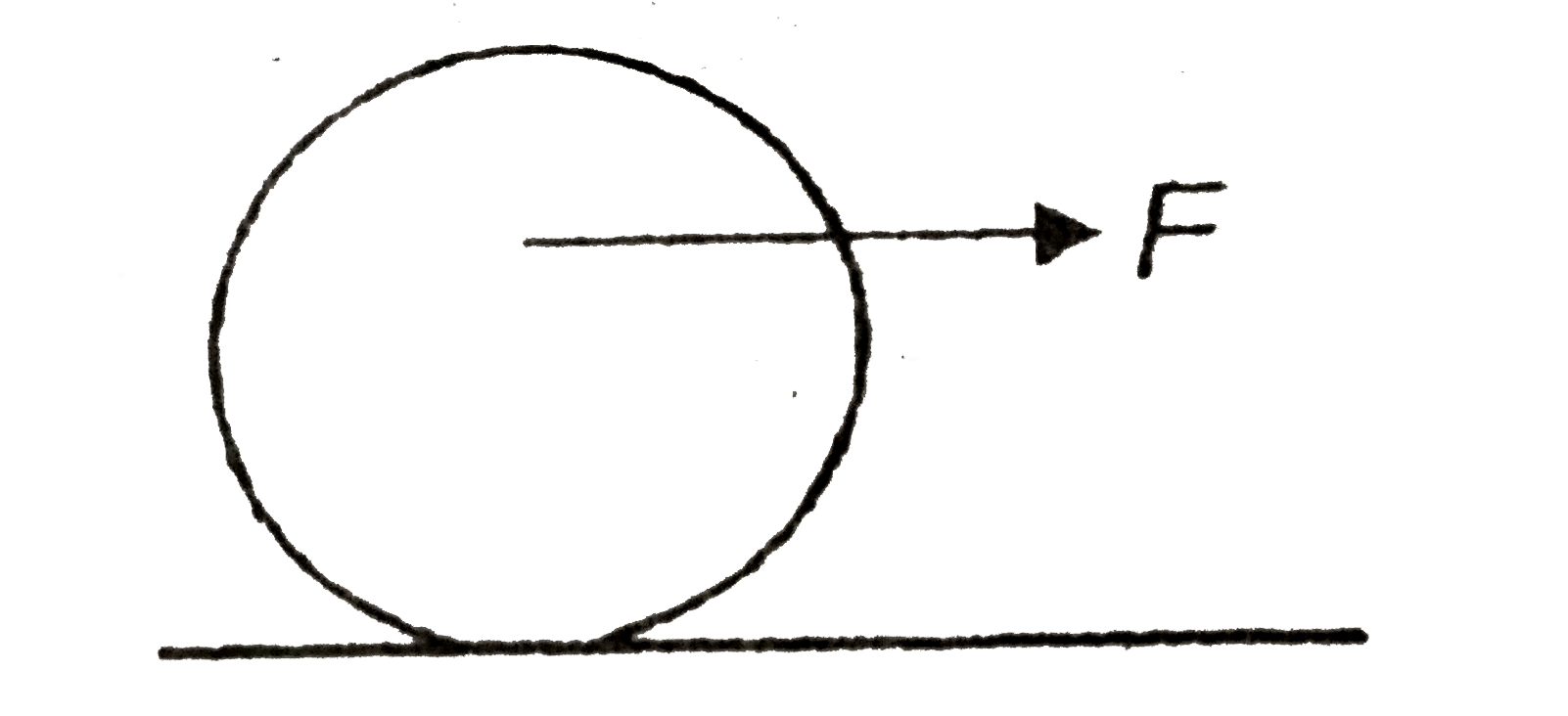
View SolutionUniform solid cylinder of mass m and radius R is placed on a rough horizontal surface. A horizontal constant force is applied at the top point P of the cylinder so that it start pure rolling .In the above question, the frictional force on the cylinder is
View Solution
